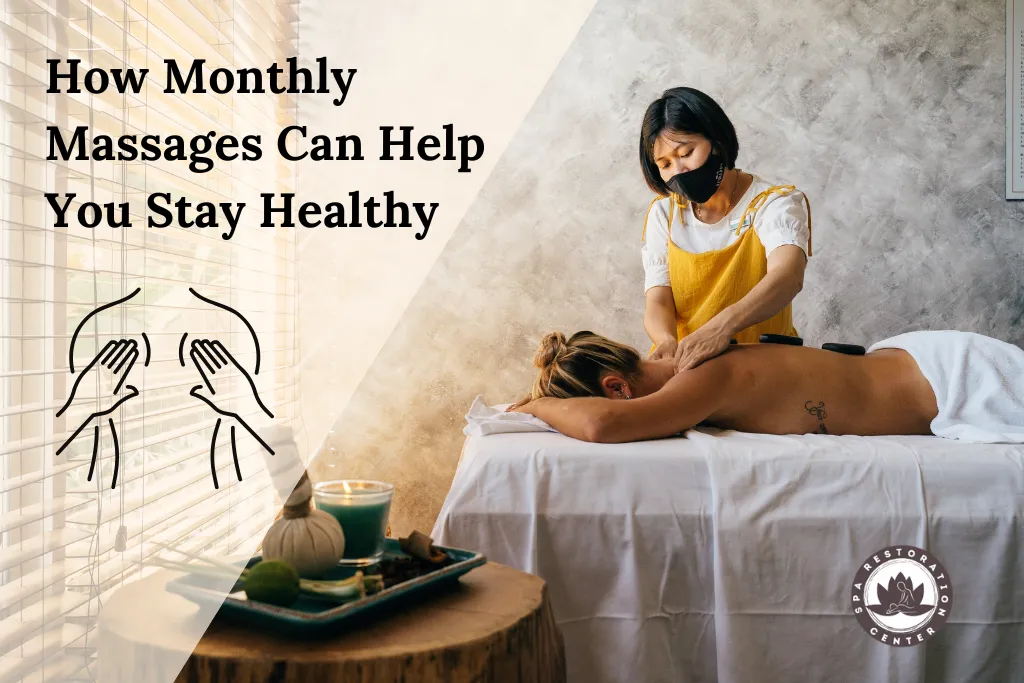
How Monthly Massages Can Help You Stay Healthy: Why Consistency Matters
Massage therapy isn’t only about relaxation; it is an effective method of improving general well-being. Regular massage therapy sessions have been shown to help improve mental health, chronic pain, and even stress levels.
If you’re like many, you might think of massage as a rare indulgence, but regular monthly massage has lasting advantages. Keeping up a routine, much like exercising and having healthy meals, is important. A well-planned massage routine can help that tight back, stress, or chronic pain stay at bay.
Importance of Consistency in Massage
We all agree that a single message can be pleasant, but its impact will only last a short while. The best outcome comes from regular sessions that remove the accumulation of tension, improve blood circulation, and support the natural healing processes of the body. To get a better idea, massage is much like working out – the more one continues, the better the effects.
Chronic stress, muscle tension, or even posture issues take months or weeks to form. One massage would ONLY provide temporary relief. Without follow-up treatment, one is guaranteed to suffer. Consistency in care is of utmost importance to treat these issues. Regular visits will ensure a pain-free, relaxed body.
The Compound Effect of Regular Massage
Like exercise, diet, or therapy, massage works best when done regularly. Each massage becomes a foundation for the next one, leading to:
- Progressive muscle relaxation – preventing tension buildup before it leads to chronic pain.
- Improved range of motion – muscles are more flexible, with less risk of strains.
- Enhanced stress resistance – regular massage reduces overall stress levels in the long run.
- Cumulative immune enhancement – supplementing the body’s immune reaction to disease.
How Often Should You Get a Massage?
Your message frequency is required to be individual to you and your way of life. The following is a general guideline:
- Once a month: Great for general relaxation, stress management, and maintaining healthy muscles.
- Every other week: Ideal for individuals who experience moderate stress, muscle tension, or moderate chronic pain.
- Weekly: Ideal for athletes, individuals recovering from injuries, or those who experience high stress or pain problems.
Massages on a regular basis improve circulation, reduce inflammation, and improve mental clarity, states the American Massage Therapy Association (AMTA).
Factors Influencing Personal Massage Schedule
Your ideal frequency depends on several factors:
- Activity Level: If you exercise on a regular basis, a bi-weekly or weekly massage will help with muscle recovery and injury prevention.
- Stress Levels: High-stress individuals benefit from more frequent massages to manage cortisol levels and prevent burnout.
- Chronic Pain Conditions: People with ongoing pain, such as arthritis or back pain, may need weekly sessions for long-term alleviation.
- Budget and Time Constraints: Even when weekly massages are not possible, adherence to a routine schedule, such as monthly brings long-term benefits.
Unique Offerings of Massage Services
Massage therapy comes in all shapes and sizes, each designed to meet a particular need. If you need deep relaxation, pain relief, or special care during pregnancy, there is a treatment for you. Two of the finest are outlined below:
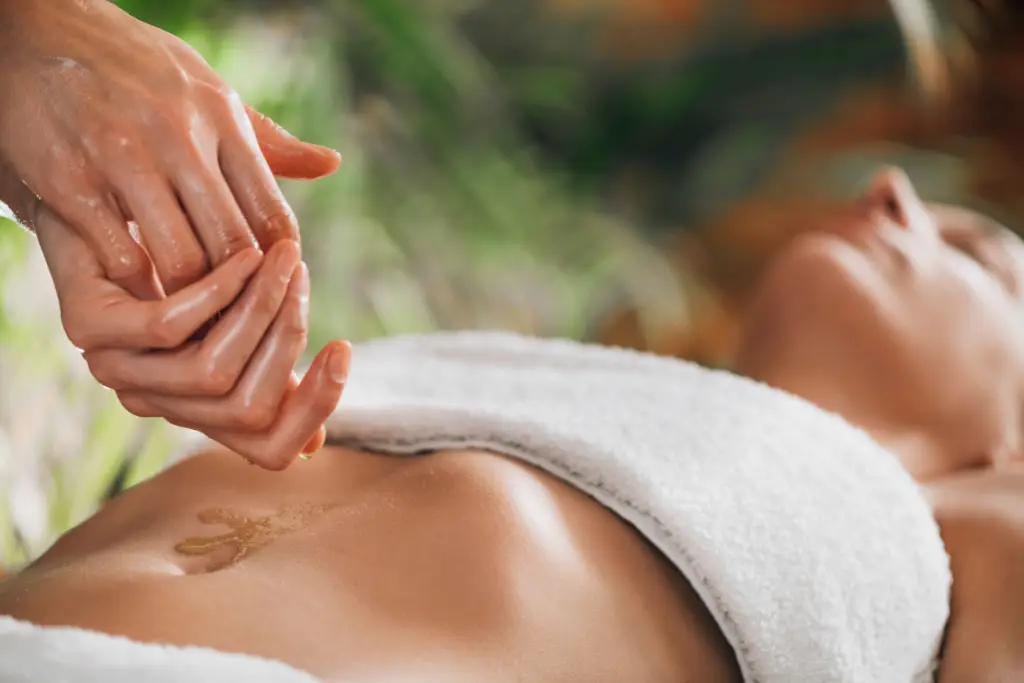
PRESS Full Body Massage
This therapy is designed to relax and rejuvenate the entire body. It is intended to release tension in the muscles and improve circulation and overall mobility. A full-body massage is an excellent choice for those who wish to relieve stress while keeping their body in prime condition.
Pregnancy Massage
Pregnancy is accompanied by aches like backache, swelling, and fatigue. Pregnancy massage is specialized to ease tension, enhance circulation, and promote relaxation, and thus, it is a safe and effective method for pregnant women.
Key Benefits of Monthly Massage
Booking a monthly massage is not merely about relaxation, it’s an active means of maintaining physical and mental health. Here’s how regular massages can help your health:
Relief from Stress and Relaxation
Massage lowers cortisol, the stress hormone, and raises serotonin and dopamine, two vital neurotransmitters that regulate mood. The hormonal balance leads to relaxation and calmness.
Alleviation and Management of Pain
Recurring ache conditions such as back ache, fibromyalgia, and arthritis could be helped with periodic massage. Massage therapy is beneficial in providing natural pain medication-free through elevated blood flow and reduced muscle stiffness.
Improvement of Posture
Poor posture is a common condition, especially among individuals who work at a desk all day. Massage is employed to rebalance muscles and relax tension in the neck, shoulders, and lower back so that correct posture is easier to accomplish.
Better Athletic Performance
For athletes, massage will help to recover from muscle pulls, prevent injury, and enhance flexibility. Massage decreases lactic acid buildup and enables healing to take place more rapidly after intense exercise.
Maintenance of Mental Wellness
Massage therapy is not just for the body, it benefits the mind, too. By reducing stress hormones and promoting relaxation, it helps manage anxiety, depression, and overall emotional health. Most individuals report feeling mentally refreshed and more alert after a massage.
Specific Conditions That Improve with Massage
Massage is not just relaxation, this is a therapeutic intervention that enhances a vast array of medical conditions. From pain to anxiety and muscle spasms, massages can be a significant source of relief when performed regularly.
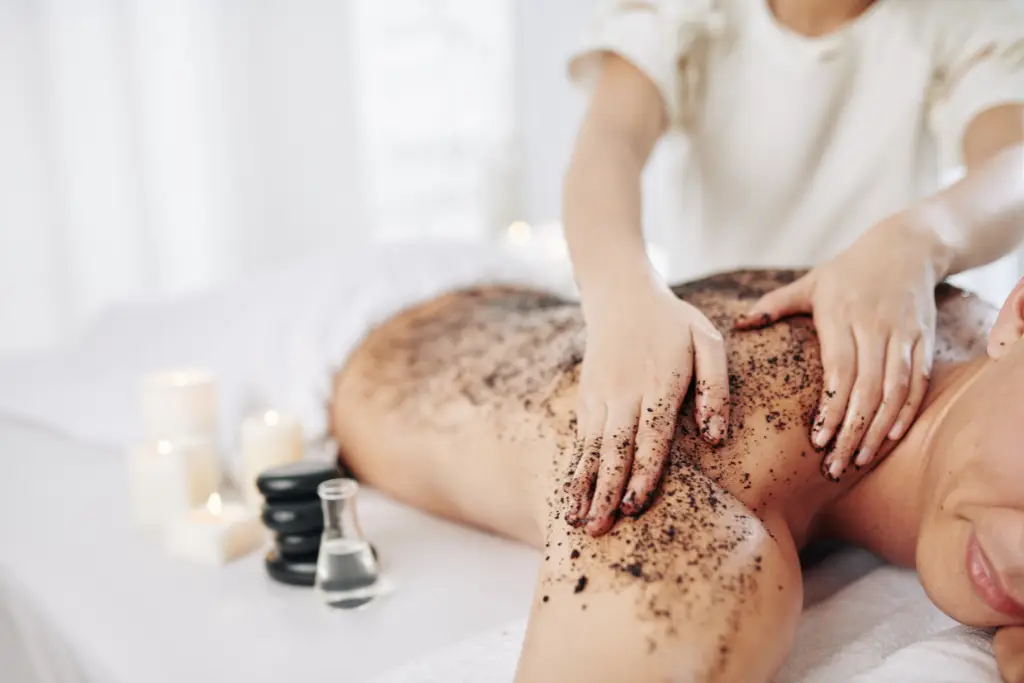
Muscle Injuries and Tension
Deep tissue massage and trigger point therapy release tight muscles, decrease stiffness, and promote healing following trauma. Regular treatments avoid tension accumulation and consequent chronic issues.
Headaches and Migraines
Massage eliminates tension in the neck, shoulder, and scalp, as well as primary headache and migraine etiologies. Individuals experience fewer and less frequent headaches with frequent therapy.
Chronic Pain Conditions
Those patients with diseases such as fibromyalgia and arthritis struggle to manage pain relief. Massage therapy promotes blood circulation, reduces inflammation, and delivers relief from stiff muscles and aches.
Anxiety and Depression
Massage therapy has been proven to reduce the production of stress hormones and augment a sense of relaxation. Massages can make great additions to other treatments for mental illness and present a healthy way to lower symptoms of anxiety and depression.
Choosing the Right Type of Massage
Not all messages are alike. The right technique depends on your personal needs and goals. Whether you seek deep relaxation, pain relief, or improved athletic performance, the right massage type ensures you get the best results.
Evaluating Personal Needs and Goals
Before you schedule a massage, consider what you need. Are you suffering from pain that just won’t go away? Do you need stress relief? Are you an athlete needing faster muscle recovery? Knowing your primary objective will help you choose the proper Treatment for your body’s requirements.
Different Massage Techniques and Their Benefits
Different types of massage offer specific advantages based on your needs.
1. Swedish Massage – Stress & Relaxation
- Best for: General relaxation, stress relief, and better circulation.
- How it works: Long, gliding strokes with light to medium pressure promote full-body relaxation.
2. Deep Tissue Massage – Chronic Pain & Tension
- Best for: Stiff muscles, knots, and chronic pain relief.
- How it works: Slow strokes and firm pressure reach deep muscle layers to break down adhesions.
3. Sports Massage – Athletic Performance & Recovery
- Best for: Athletes or active individuals looking to prevent injuries.
- How it works: Uses targeted pressure and stretching techniques to improve flexibility.
4. Trigger Point Therapy – Targeted Pain Relief
- Best for: Localized pain and tension headaches.
- How it works: Applies pressure to trigger points to relieve tension and pain.
5. Prenatal Massage – Pregnancy Support
- Best for: Expecting mothers experiencing back pain, swelling, or stress.
- How it works: Gentle techniques improve circulation and reduce pregnancy discomfort.
How it works: Gentle techniques improve circulation and relieve pregnancy discomforts.
Massage therapy isn’t just for athletes or stressed-out professionals, it benefits everyone.
Athletes & Fitness Enthusiasts
- Prevents injuries and speeds up muscle recovery.
- Enhances flexibility and reduces soreness.
Office Workers & Sedentary Lifestyles
- Reduces back and neck pain caused by prolonged sitting.
- Corrects posture and prevents “tech neck.”
Seniors & Aging Adults
- Improves circulation and joint mobility.
- Helps manage arthritis pain and muscle stiffness.
Individuals with Anxiety & Depression
- Lowers stress hormones and improves mood.
- Encourages better sleep and relaxation.
How to Incorporate Monthly Massages into Your Routine
Building a massage routine is easier than you think:
- Plan ahead and book your sessions – Such as going to see a doctor.
- Budget your self-care – put your health first.
- Choose a qualified massage therapist – Look for licensed professionals.
- Combine massages with home care – Include foam rolling or stretching between sessions.
Professional Massage vs. At-Home Massage
| Feature | Professional Massage | At-Home Massage |
| Effectiveness | Highly effective | Limited effectiveness |
| Techniques Used | Specialized methods | Basic self-massage |
| Relaxation | Deep relaxation | Moderate relaxation |
| Personalized Treatment | Tailored to needs | Limited customization |
While at-home self-massage tools (foam rollers, massage guns) can help, nothing replaces a skilled therapist.
Final Thoughts: Why You Should Prioritize Monthly Massages
The benefits of frequent massage are undeniable. Whether you want to improve your physical health, mental clarity, or stress level, regular massage therapy can help.
Key Takeaways:
- Massage is not a luxury, a necessity for continued well-being.
- Frequency is key. One massage is not going to provide long-term benefits.
- There are many different types of massage to treat many different ailments.
- Creating a therapist you trust and booking it in ensures long-term benefits.
So, if you haven’t already made massage therapy a part of your ongoing self-care routine, do so now. Look after your health, your body and mind will thank you. Spa Restoration Center is here to support your wellness journey every step of the way.
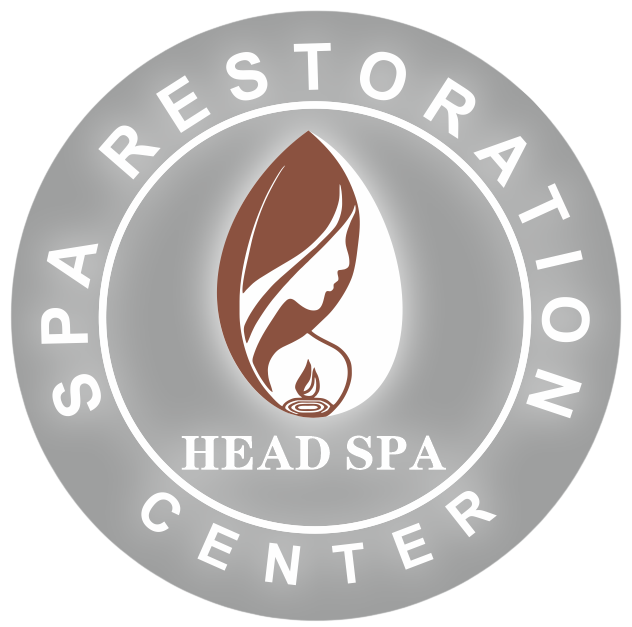
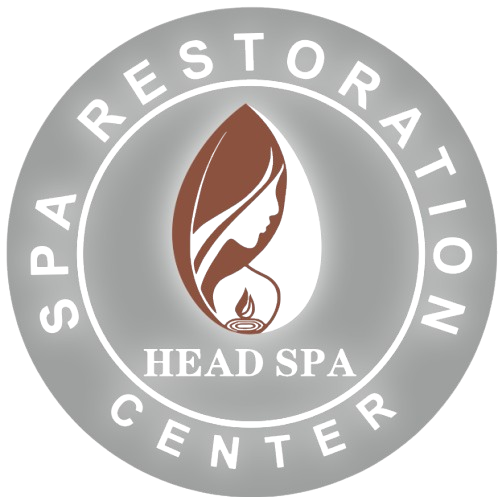
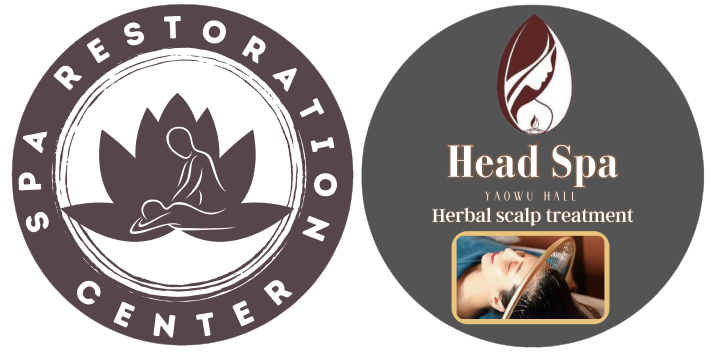
Leave a comment